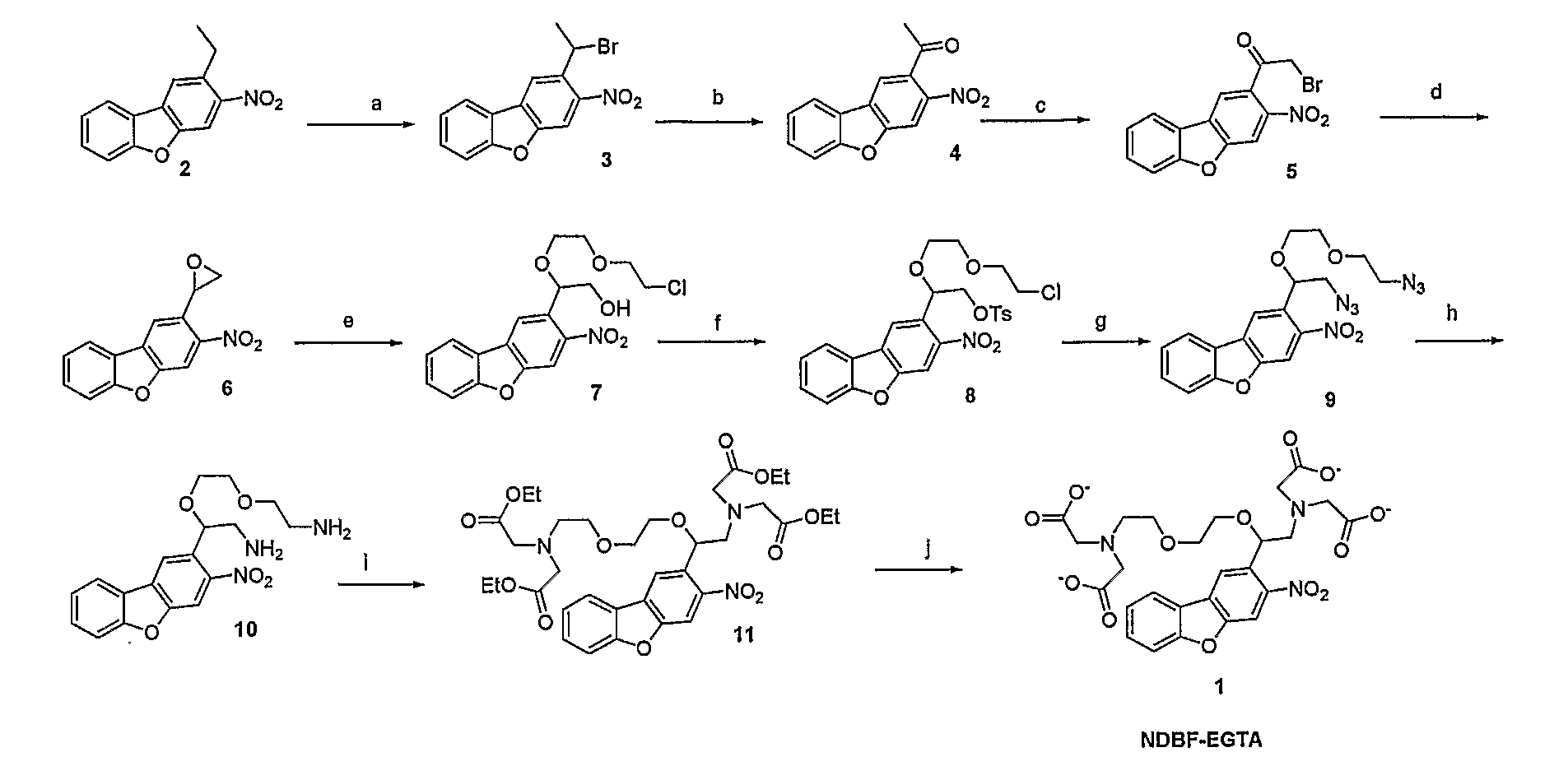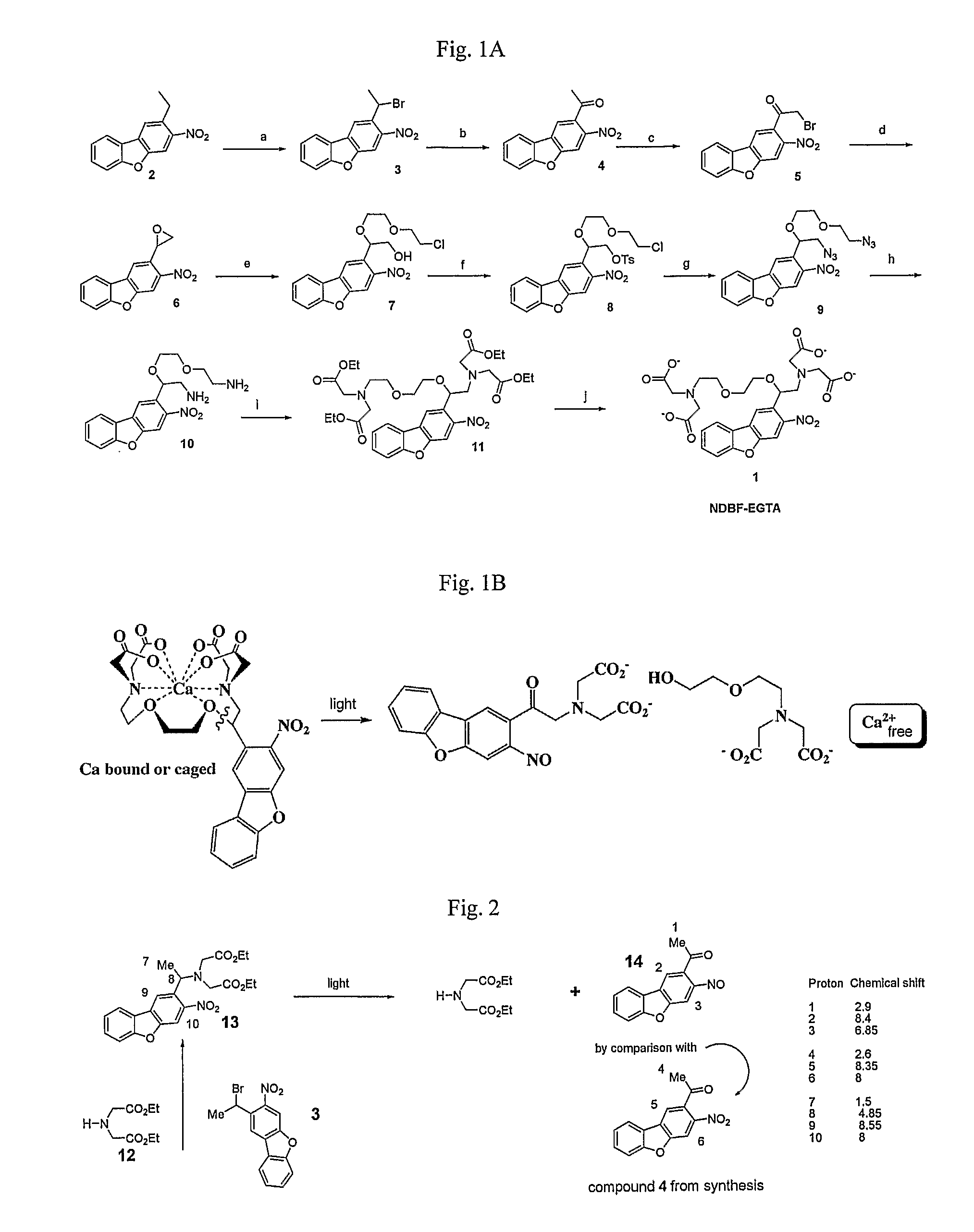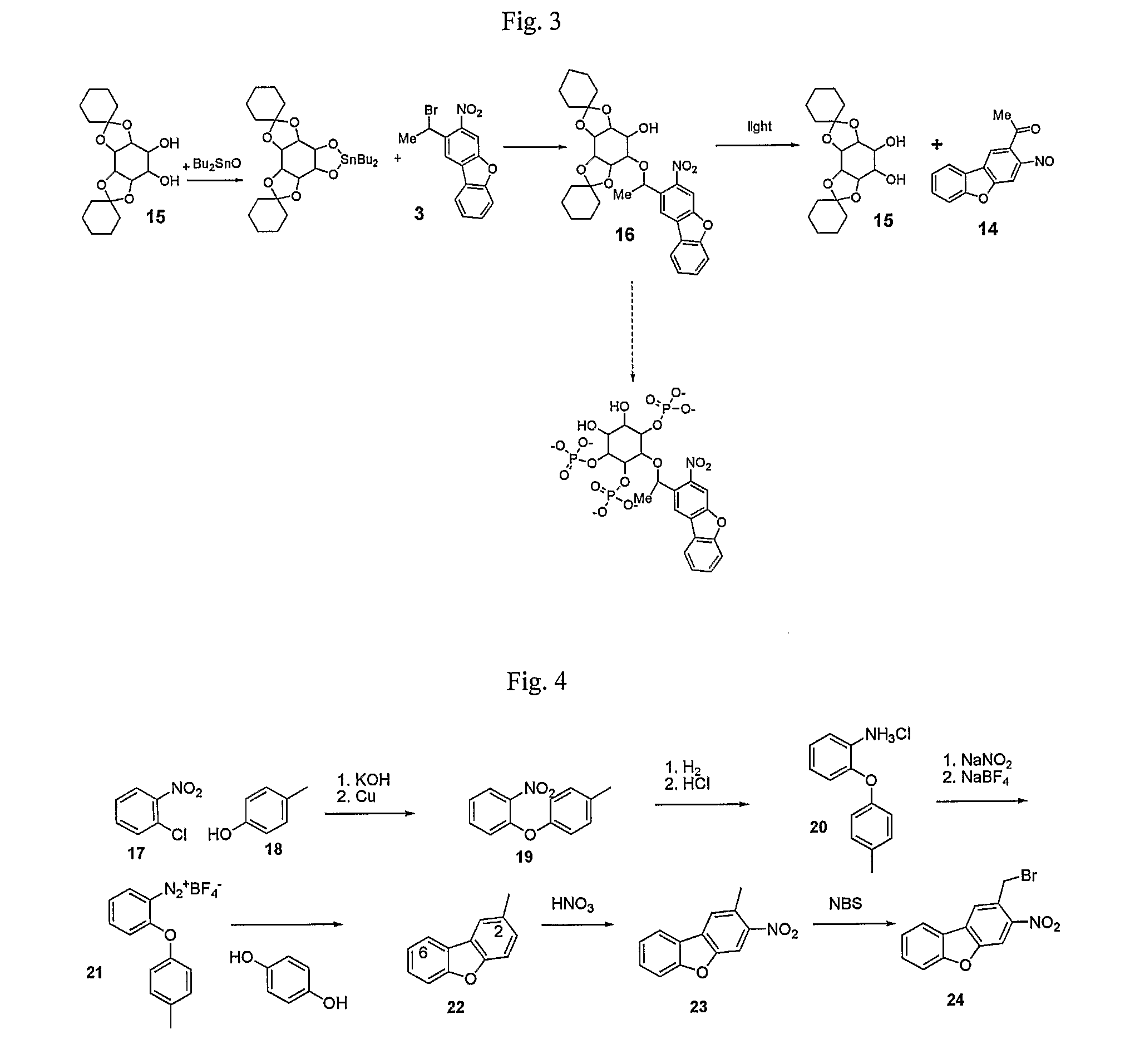Synthesis of Nitrodibenzylfuran Chromophore For Photodeprotection of Organic Molecules
- Summary
- Abstract
- Description
- Claims
- Application Information
AI Technical Summary
Problems solved by technology
Method used
Image
Examples
example 1
Synthesis of Compound 13
FIG. 2
[0101]Compound 3 can be obtained as shown in FIG. 3A and is depicted by formula below:
[0102]A solution of bromide 3 (0.18 mol), amine 12 (0.3 mmol), sodium iodide (0.3 mmol) and diisoproylethylamine (0.3 mmol) was stirred at RT for 90 mins in acetonitrile. The solvent was evaporated, washed with water and ethyl acetate and purified by flash chromatography to give compound 13 (16 mg, 0.037 mmol). NMR: 8.55 (s, 1H); 8.0.5 (d, 1H, J=1.1 Hz); 8.0 (s, 1H); 7.4-7.65 (m, 3H); 4.9 (q, 1H, J=6.6 Hz); 4.09 (q, 4H, J=7 Hz); 3.6 (ABq, 4H, J=12.3 Hz); 2.6 (d, 3H, J=6.6 Hz); (t, 6H, J=7 Hz).
example 2
Synthesis of Compound 16
FIG. 3A
[0103]A solution of 15 (1.24 g, 3.65 mmol) and dibutyl tin oxide (0.908 g, 3.65 mmol) in toluene (25 ml) was heated at reflux temperature for 24 h with azeotropic removal of water. The clear solution was concentrated under reduced pressure. The gummy residue obtained was stirred with CsF (0.577 g, 3.8 mmol) and bromide 3 (0.641 g, 1.4 mmol) in DMF (5 ml) at RT for 20 days. The reaction mixture was poured into water and extracted with dichloromethane (3×20 ml), dried over MgSO4, filtered and evaporated using rotary evaporator. The crude product was purified by flash column chromatography (hexane:ethyl acetate, 2:1) to give 16 (0.21 g) in a yield of 21%.
[0104]1H NMR (300 MHz, CDCl3) δ=8.48 (s, 1H), 8.25 (s, 1H); 8.08 (d, J=1.1, 1H); 7.4-7.65 (m, 3H); 5.55 (q, 1H, J=6.6 Hz), 4.48 (dd, J=2.6, 1.3, 1H); 4.34 (t, 1H, J=8 Hz); 4-4.1 (m, 2H); 3.68 (dd, J=3.0, 0.9, 1H), 3.48 (dd, J=3.9, 2.7, 1H), 2.6 (s, 1H), 1.2-1.8 (m, 20H); 1.67 (d, 3H, J=6.6 Hz).
example 3
Synthesis of Compound 24 NDBF Methylbromide
FIGS. 4A-B
[0105]Compound 24 NDBF methylbromide is depicted by the formula below:
Synthesis of Compound 19
[0106]Ortho-Nitrochlorobenzene (50 mmol) was coupled to para-methylphenol (69 mmol) by analogy to prior art: Organic Syntheses Collected Vol. 2. pp 445-446 to give 19 in 45% yield (5.12 g, 22.3 g). NMR: 7.92 (dd, 1H, J=1.8, 8 Hz); 7.47-7.35 (m, 1H); 7.15-7.2 (m, 3H); 6.9-7.02 (m, 3H); 2.35 (s 3H).
Synthesis of Compound 20
[0107]Compound 19 (22 mmol) was dissolved in ether (80 ml) with 10% Pd / C and subjected to hydrogenation at RT and atmosperic pressure until TLC showed no SM remained. The catalyst removed by filtration through Celite and the product was precipitated by bubbling HCl gas through the ether solution to give 19 as a solid in 85% yield (4.38 g, 18.6 mmol). NMR: 7.67 (dd, 1H, J=6, 1 Hz); 7.18 (dt, 1H, J=5, 1 Hz); 7.11 (d, 2H, J=7 Hz); 7.02 (d, 2H, J=7 Hz); 6.92 (dt, 1H, J=6, 0.8 Hz); 6.77 (dd, 1H, J=6, 0.8 Hz).
Synthesis of Compou...
PUM
| Property | Measurement | Unit |
|---|---|---|
| Length | aaaaa | aaaaa |
| Length | aaaaa | aaaaa |
| Length | aaaaa | aaaaa |
Abstract
Description
Claims
Application Information
 Login to view more
Login to view more - R&D Engineer
- R&D Manager
- IP Professional
- Industry Leading Data Capabilities
- Powerful AI technology
- Patent DNA Extraction
Browse by: Latest US Patents, China's latest patents, Technical Efficacy Thesaurus, Application Domain, Technology Topic.
© 2024 PatSnap. All rights reserved.Legal|Privacy policy|Modern Slavery Act Transparency Statement|Sitemap



